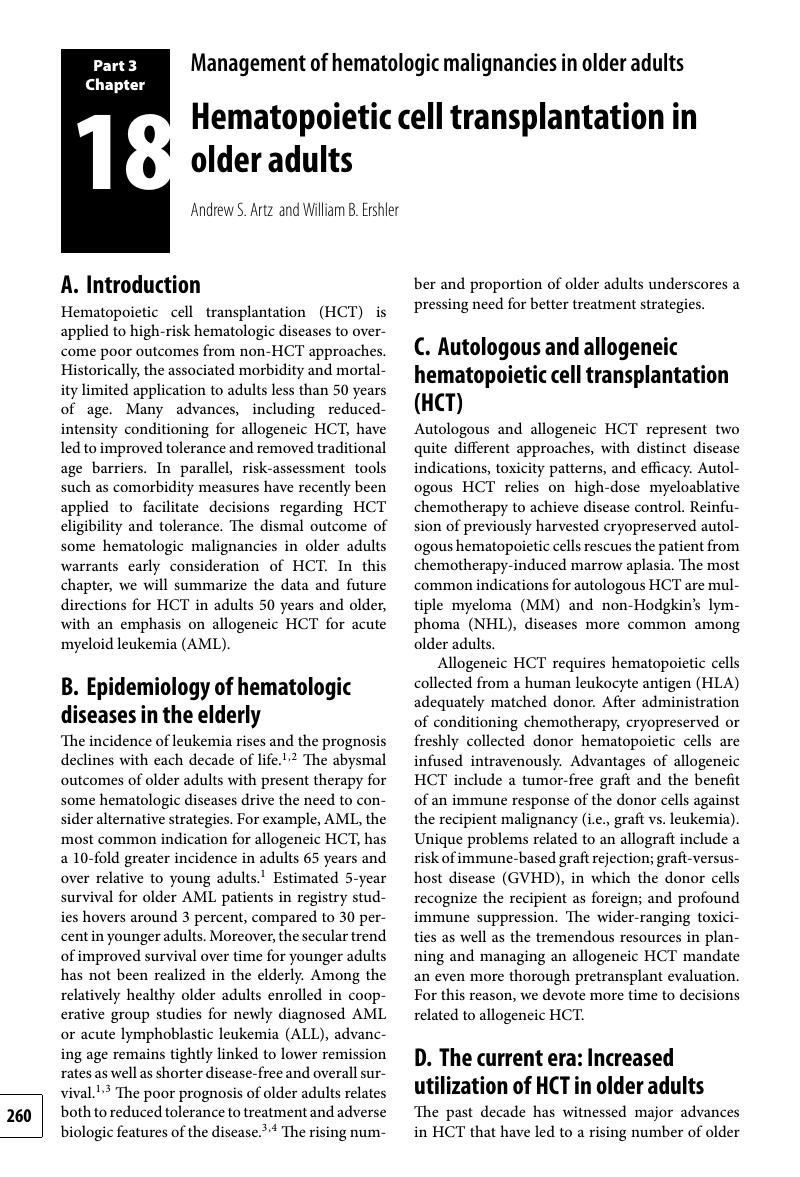Book contents
- Frontmatter
- Contents
- Contributors
- Part 1 Key principles in geriatric oncology
- Part 2 Management of solid tumors in older adults
- Part 3 Management of hematologic malignancies in older adults
- Chapter 15 Management of myelodysplasia in older adults
- Chapter 16 Management of chronic leukemia in older adults
- Chapter 17 Management of acute myeloid leukemia in older adults
- Chapter 18 Hematopoietic cell transplantation in older adults
- Chapter 19 Management of non-Hodgkin's lymphoma in older adults
- Chapter 20 Management of multiple myeloma in older adults
- Part 4 Symptom management and supportive care of older adults
- Index
- References
Chapter 18 - Hematopoietic cell transplantation in older adults
from Part 3 - Management of hematologic malignancies in older adults
Published online by Cambridge University Press: 05 August 2011
- Frontmatter
- Contents
- Contributors
- Part 1 Key principles in geriatric oncology
- Part 2 Management of solid tumors in older adults
- Part 3 Management of hematologic malignancies in older adults
- Chapter 15 Management of myelodysplasia in older adults
- Chapter 16 Management of chronic leukemia in older adults
- Chapter 17 Management of acute myeloid leukemia in older adults
- Chapter 18 Hematopoietic cell transplantation in older adults
- Chapter 19 Management of non-Hodgkin's lymphoma in older adults
- Chapter 20 Management of multiple myeloma in older adults
- Part 4 Symptom management and supportive care of older adults
- Index
- References
Summary

- Type
- Chapter
- Information
- Practical Geriatric Oncology , pp. 260 - 273Publisher: Cambridge University PressPrint publication year: 2010
References
- 4
- Cited by



